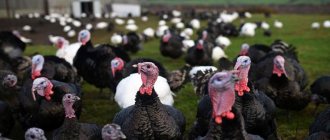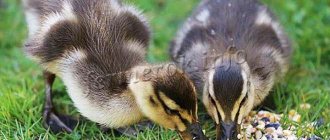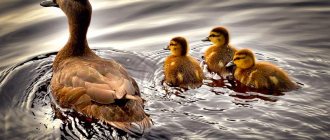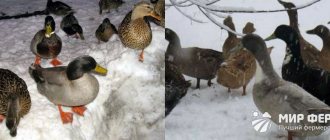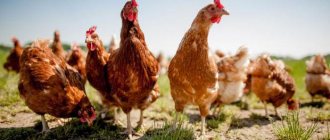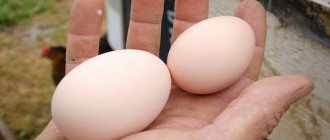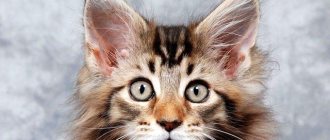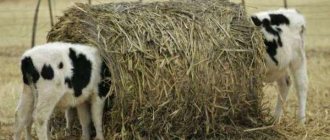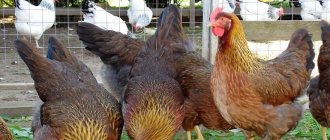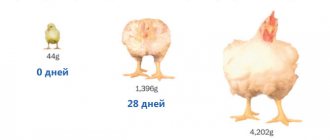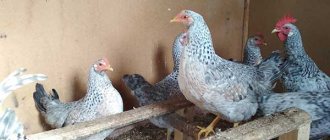Raising ducks is a very profitable business. In a year, more than a hundred eggs and about fifty ducklings can be obtained from just one individual.
Ducks are also bred for meat. Already one month old individuals of some breeds reach a weight of up to 2.5 kg, and, for example, an adult drake weighs up to 6 kg. Duck droppings are an excellent fertilizer for the garden, and bird fluff is ideal for sewing down and feather products.
That is why experienced poultry farmers recommend that anyone who is thinking about raising poultry start raising ducks. They do not require long walks, and can be kept even in a small area.
Thus, on a site with an area of 60 m2 to 70 m2, up to 150 individuals can be raised. Birds reproduce quickly, hatch their offspring well and gain weight at an accelerated pace.
But, in order to get the maximum benefit from raising this bird, you need to know the features and subtleties of keeping and breeding ducks.
Choosing ducklings
You need to buy chicks in early spring - at this time the best prices for birds are.
The meat will be ready by mid-April, when prices for duck are still very high, which significantly increases the profitability of duck farming. When choosing ducklings, you should pay attention to the following points:
- Place of purchase. It is better to use the services of an incubator, where there are documents for the birds and certificates for activities - the price is 5-10% higher, but there are at least some guarantees.
- Mobility and activity of the bird. Choose the noisiest and most active individuals that have shiny fluff (indicates good vitaminization of the body) and dry butts.
- A good appetite. If you take chicks, give them food, they should eat it with appetite. And this does not depend on whether they have eaten or not before. Literally 5 minutes after eating, the baby will peck food again if he is healthy.
The offspring must be transported in a homemade box - a cardboard box with holes on all sides for ventilation. Chicks are afraid of high temperatures and can suffocate if there is a lack of oxygen. If you drive for a long time, you can stop once for 1 hour and open the box so that the ducklings can breathe some air outside.
What to look for when buying a duckling
Successful raising of ducklings largely depends on the genetics of the bird and the correct incubation process. To obtain “fast meat,” hybrids have been bred that can only be purchased at large poultry farms or from farmers who hatch ducklings from eggs purchased at the same factories.
It is better to purchase day-old young animals, since the babies do not experience stress during transportation. In this case, the chicks have not yet been fed; the ducklings can easily be accustomed to the food that the new owner has.
Characteristics of a healthy day-old duckling:
- weighs about 80–100 g;
- has clean fluff all over the body;
- straight paws and clean, clear eyes.
The bright green, slightly watery droppings of day-olds should not be embarrassing; it is the residual yolk that is leaving the body.
Babies can only be transported in insulated boxes at a temperature not lower than +28 degrees.
Raised 2-week-old ducklings are often available for sale. Buying such young animals is a big risk, since resellers often buy rejected, poorly growing birds and sell them. The quality of such young animals can be determined by live weight and appearance. A good duckling at the age of 14 days cannot weigh less than 400 g. It is nimble and vocal, is actively interested in food and tries to run away if it is picked up.
It is better not to take lethargic, inactive, small or humpbacked chicks.
When buying teenage ducklings at the market or “from cars”, it is not recommended to immediately release them into a common poultry house. The purchased young are kept separately for about 3 weeks, and the chicks are given a broad-spectrum antibiotic to prevent the disease. After a course of medication, be sure to give complex vitamins and a probiotic (yogurt, kefir or Vetom).
Poultry house for large ducklings
According to recommendations for breeding ducks at home for beginners, the area of the poultry house and aviary for walking should be increased as the ducklings grow. Month-old ducklings will need 1 sq. m. for 8 individuals. The stocking density for adult two-month-old birds cannot be higher than 3.5 birds per meter.
The duck territory should be equipped with the following equipment:
- feeders - it is best to make wooden ones;
- drinking bowls - calculation of 0.6 liters of liquid per duck, the sides of the drinking bowls are 20 cm high;
- nests for eggs (1 nest for 3 ducks);
- artificial lighting devices;
- ventilation system and heating system.
To work with birds after slaughter, freezers and plucking machines are useful.
The walking area is fenced with a metal mesh. Place the “pasture” on a high area so that rains do not flood the site.
How to properly care for ducks: the main points of growing
In order to properly organize the process of breeding ducks, first of all you need to pay attention to the following main points, which will be solved step by step:
Choosing the best breed, depending on:
- breeding goals: obtaining meat, eggs, or both meat and eggs in medium quantities;
- climate of the area where duck breeding is planned.
Proper preparation of the breeding site: arrangement of the premises, walking area.
Organization of proper maintenance and care of ducks: taking into account heat and light conditions, feeding, hygiene.
Fence installation and duckling density
Raising ducklings at home requires a specially equipped place. You need two separate fences where the ducklings and adults will be kept (you should not combine them together, especially if the density of individuals per 1 sq.m is large, as there is a risk of ducklings being crushed). The density of week-old chicks in a cage should not exceed 18-25 individuals per 1 sq.m., but they do not need a spacious fence - then they will gain weight longer.
If ducks are raised for meat (and not for eggs), it is best to use the maximum density of individuals per unit area. Since mallards are a relatively calm bird and do not fly, a regular wooden fence or frame structure with supports and stretched metal or plastic mesh is suitable for them. When ducks begin to lay eggs, it would be better to place them in a larger room with a density of no more than 5-6 individuals per 1 m2.
Installing an inexpensive fence is done as follows:
- Every 4-5 meters a rod 8mm thick is hammered in, maybe more.
- A polyethylene mesh with a density of at least 90 g/m2 is stretched so that a healthy individual does not tear it later.
- Add soil to the edge of the mesh to prevent the bird from crawling underneath.
If ducks begin to fly (some breeds), the feathers on the wings need to be trimmed. Please note that Mularda ducks do not necessarily require a pond or indoor space. If you want to raise more demanding breeds, such as Muscovy duck or Pekin duck, then first of all you need to take care of the indoor space. Keeping them outside can have a detrimental effect on the health of the bird during the cold season (the temperature at night should be at least +10C).
If you are going to sell not only duck meat and eggs, but also feathers, you need constant access to a body of water. In this case, the quality of the fluff will be the highest (taking into account the addition of vitamin C and K to the diet).
Ventilation of the room is necessary. Despite the fact that the bird is resistant to diseases, the constant presence of a large number of individuals in a closed space can lead to illness. The room should be ventilated at least once every couple of days, or have open access to the street.
Organization of a poultry house and space for walking ducks
Choosing a location for the future poultry house
A poultry house is a specially equipped room in which ducks will be kept at night and during the winter season. Any structure can be used for a poultry house: a barn, a barn.
A necessary condition is the location of the structure on a hill to ensure uninterrupted outflow of rainwater and other precipitation.
What preparatory activities should be carried out before introducing ducks:
- If a log room was chosen for the poultry house, then it must be plastered and all holes sealed.
- The structure made of boards must be upholstered with plywood sheets, plastered and whitewashed.
- The reed walls are coated with a mixture of clay and straw.
When arranging the premises, you should remember that birds do not tolerate high humidity, heat and cold, so everything possible must be done to protect them from negative factors.
Poultry house requirements:
- The room does not have to be large. Its area is calculated based on the number and age of individuals: 1 m2 is enough for 5 heads of young birds or 3 heads of adult birds.
- The floor should rise 25-30 cm above the ground. This will help reduce the risk of frostbite to the bird and will prevent rodents from entering.
- The litter should always be dry, soft and warm. For this purpose, the floor is sprinkled with straw, peat or shavings. There should be up to 12 kg of such litter per bird in the winter season. In summer you can do without bedding.
- The height of the walls in the room can be small from 100 cm to 180 cm.
- It is necessary to strictly ensure that the room temperature does not drop to zero. It is very easy to determine that ducks are cold by changes in their behavior: they stop eating, huddle together, and egg production deteriorates.
- Overheating of the room will also have a bad effect on the bird, so it must have good ventilation. If the ducks are hot, they begin to drink a lot, breathe heavily, and look disheveled.
- The duration of daylight in the poultry house is at least 14 hours. If it is not possible to install a sufficient number of windows, then illumination can be maintained with artificial devices.
- The exit from the poultry house is a manhole measuring 40x40 cm. It should be installed in the southern or southeastern part and protected from drafts and precipitation.
- The optimal humidity in the poultry house is 65 – 70%. Exceeding the norm can cause many diseases.
Equipment for walking space
In the warm season, ducks must be walked, so it is necessary to additionally equip the area for this purpose.
A walking area is a small area where ducks can walk without interfering with each other. In order for the space not to be flooded with water, it must be located on a hill. The fence must be made of fishing or metal mesh, and its height should not be less than 1 meter.
In the winter season, the bird also needs to be walked, but this can only be done when the air temperature is at least 100 and there is no strong wind.
Before walking, it is necessary to prepare the area: the space must be cleared of snow and covered with straw. Since in the winter season birds cannot obtain food on their own, feeders should also be installed on the territory.
Every poultry farmer who decides to raise ducks must remember that only creating the most favorable conditions for keeping them will help to obtain high-quality meat and good egg production.
Options for choosing ducks for your own backyard
Beginning poultry farmers usually give preference to those varieties of domestic ducks that demonstrate maximum meat productivity with relatively simple care and low costs. Modern breeds and crosses for meat or meat-egg purposes are well suited for keeping on a personal plot. However, there are a number of factors that must be taken into account at the stage of preparation for acquiring a duck flock:
- Demands of pets regarding the composition of feed. Most broiler varieties are positioned by their originators as absolutely unpretentious, but this is not entirely true. Poultry of this type, as a rule, are specially bred for keeping on large farms and intensive fattening with a scientifically based selection of diets, which cannot always be provided on a private farmstead. Of course, ducks will grow and gain weight well even without full compliance with optimal conditions, but in this case their main economic parameters (earliness, slaughter weight and “meatiness” of the carcass) will differ markedly from the “record” ones.
- Ducks need grazing and regular “water procedures.” If the future owner cannot provide the pets with a place for free walking and swimming, it is better for him to give preference to those ducks whose health the absence of such “conveniences” will not affect.
- Coloring. On large poultry farms, duck breeds with white plumage are predominantly bred. This is due to the fact that light down and feather raw materials are in demand by light industry enterprises. In addition, it is easier to pluck such birds to “clean skin” and the carcasses obtained from them have the most presentable presentation. Owners of country and rural plots pay attention to the decorative qualities of their pets and often choose breeds with plumage that is brightly and catchily colored.
- Specifics of behavior. Domestic ducks can hardly be called “quiet”. Some breeds are very noisy and loud, others are timid, nervous, and prone to hectic running around. Such features must be taken into account, since choosing pets with a “complex” character can create unnecessary problems.
- Possibility of herd renewal. Many summer residents prefer not to raise ducks on their own. They simply purchase day-old ducklings from the nearest market or poultry breeding plant and fatten the young animals until they reach slaughter weight. For this option, it is better to buy poultry that belongs to the “meat” crosses. She does not have maternal instinct and her qualities are not inherited by offspring, but in this case this is not required. Those who want to breed ducks in their own backyard must choose from those varieties whose economic parameters are genetically fixed. True, not all such ducks are capable of being brood hens themselves, but this is not critical, since eggs can also be incubated artificially.
- Cost of incubation material and young animals. Today's domestic market is not at all pleased with the variety of offers. The catalogs of most sellers offer material from only 4-5 duck breeds and crosses, and the risk of stumbling upon a “re-grade” is quite high. Purebred ducklings are expensive. Therefore, future owners should choose the supplier very carefully and carefully evaluate the documents that it can provide to buyers. If the purpose of purchasing young animals is solely to fatten them for meat, it makes sense to abandon purebred birds, giving preference to interbreed hybrids or “mulards”.
Natural bodies of water located nearby are a great help in keeping waterfowl.
When planning to purchase duck breeds for home breeding, you should take into account factors such as the area of your garden plot and the size of the room that will be allocated for the bird. Some large varieties can do without grazing and open water, but need a spacious house. Other ducks fly well; their exercise yard must be equipped with a high fence. Many get along well with other residents of the farmstead, but there are also those who prefer to stick to their “family” and not contact anyone else. It is better to take all these nuances into account before purchasing young animals, approaching the choice of waterfowl pets carefully and consciously.
Obtaining and incubating eggs
The most important issue when breeding ducks is raising the chicks. And it begins with the selection and incubation of eggs. First you need to figure out which duck you can work with and get offspring from it. The selected birds are observed for several months. Healthy, well-built and strong birds are left for breeding. The ratio of males and females is 1 drake per 5-8 ducks. When working with a duck, it must be provided with long daylight hours: this directly affects the number of eggs obtained.
The birds left behind must be provided with decent care, feeding and protection from disease. Eggs for incubation are taken only from healthy birds. You can watch the video to see which egg is needed to hatch. In general, eggs should be intact, without cracks or dents. Blue discoloration on the shell indicates that they have begun to deteriorate - this can also be understood by the unpleasant smell. However, you should not take eggs that are too large. A duck is not a goose, and even in the largest breeds the weight of one egg cannot be more than 0.1 kg.
Long-term storage negatively affects the condition of the embryo, so you can store the egg for no more than 5-8 days. Ideally, it should be immediately placed under the duck. These birds can fly both during the winter and summer months. And this period is easy to recognize. Very characteristic metamorphoses occur with the duck. She begins to separate from the main mass of birds and is constantly busy arranging the nest. She also plucks out her down and lays it in the place chosen for laying.
Hatching eggs by a hen
The use of a hen for brooding is used by many poultry farmers. This method, if done correctly, is more effective than artificial incubation. From the very first day after planting, the clutch is under the supervision of the duck. You just need to make sure that the bird does not forget about food and drink. She must also return to the nest on time. It is advisable that the nests be separated from each other, then no one will disturb the hen. Soft, lightweight materials are suitable for bedding in nests.
There are also certain problems when breeding chicks using this method. Sometimes it happens that a duck does not leave the clutch, and then it needs to be reminded about food. It also happens differently: after eating, she does not return to incubation, and she must be manually returned to the nest.
Some breeds are not good brood hens. For example, Peking ducks. The main problem with these white birds is that they do not strive to breed. Indo-ducks, which many people like to keep in their dachas, compare favorably with them.
Hatching duck eggs in an incubator
When hatching in an incubator, pre-selected eggs are used, which are usually stored at a temperature of 10-12°C. Storage should not last longer than one week. When the eggs are just placed in the incubator, the temperature in it is maintained at 37-38°C. It must be remembered that a duck egg takes a long time to warm up, and when about 2/3 of the time required for hatching has passed, the temperature must be lowered to 30-31°C.
The time required for the embryo to fully develop depends on the specific duck breed and takes from 4 to 5 weeks. And regardless of what particular breed needs to be bred, the process of embryo development should be monitored. For this purpose, ovoscopy is performed. This process allows you to observe how the incubation is progressing. Making an ovoscope at home is not difficult. Take a box in which a hole is cut out slightly smaller than the size of the egg, and a backlight from a regular lamp is attached to the bottom.
The egg is placed in the hole and illuminated from below. On the 6-7th day of incubation, you can see that the circulatory system has begun to form in the egg. After 15-17 days, you can see that the embryo has already formed and is gradually moving. If development stops for any reason, then the insides of the egg are motionless.
Many poultry farmers do not recommend ovoscoping for beginners. It still does not allow you to influence the development of eggs, and if carried out incorrectly, it can harm the embryos.
Ducklings: maintenance, care, feeding
Keeping ducklings: main features
In the first weeks of their life, ducklings need strict adherence to temperature conditions. If the babies are under the supervision of a hen, then there is no need for an additional source of heat, since an adult is able to protect the babies from temperature changes.
Recommended temperature conditions:
- from days 1 to 7 of the chicks’ life, the litter temperature should be at least 27-300;
- second week – 23-260;
- third – 19-220;
After this, the chicks begin to get used to the natural air temperature.
It is extremely important to ensure that the litter is dry. Otherwise, the ducklings will freeze and often get sick.
The duration of daylight in the first days of life should be at least 20 hours. Once the ducklings reach one month of age, it can be reduced to 12 hours.
Ducklings can be released for walks with a duck five days after birth. In the evening, they are locked in a room in which all temperature requirements must be met. After the ducklings reach three weeks of age, they can be left outdoors and at night.
The presence of a reservoir has a very beneficial effect on raising ducklings. Accompanied by an adult bird, ducklings can swim there from the age of three weeks, and independently from a month old.
You can keep ducklings in cages for the first two weeks of their life, after which they need to be given more freedom, that is, organized walking, gradually increasing the time allotted for it. Month-old young animals are completely transferred to free-range housing.
Feeding ducklings: vitamins, mash, feed
Feeding ducklings at home is quite simple to organize: the young quickly get used to receiving food at a specific time, and their growth and weight gain occurs quite quickly.
At the age of three weeks, the duckling weighs about ½ kg, at the age of six weeks - 1.5 kg, and at 2.5 - already about 2-2.5 kg. At this age, ducklings can already be slaughtered.
Many experienced poultry farmers strive to slaughter chickens before frost sets in. This is due to the opportunity to save on food, because in the summer and autumn seasons the main diet of chicks is greens and what they themselves find on the pond.
Feeding the ducks
Feeding in the first days after birth
In the first week after birth, chicks need to be fed 6-8 times a day. The feeding schedule can be arranged so that the first feeding is early in the morning and the last before dusk.
The diet may include: cottage cheese, chopped boiled eggs, low-fat cottage cheese and other dairy products.
It is better to give food in narrow troughs so that the chickens do not trample it. Drinkers should be separate from feeders. This requirement can be explained quite simply: a duck is a waterfowl. And at a very young age, she already has the instinct to eat the food that is in the water, or to wash down the food immediately after it enters her mouth.
If the drinking bowl is placed next to the food, then after the first feeding it will be wet, and the drinking bowl will be dirty. Their distant location will force the duckling to go to the drinking bowl after eating, and by the time he gets to it, he will have already swallowed the bulk of the food, which will help keep the water clean. Dirty water is the source of many diseases.
It is also recommended to add a small amount of potassium permanganate to the water, but make sure that the water is not colored pink (the amount of potassium permanganate should be minimal).
5 days after birth, ducklings are allowed to be given a mash of cottage cheese, eggs, dairy products with the addition of a small amount of ground wheat and corn dirt.
What to feed ducklings aged one to three weeks?
As soon as the chickens reach a week of age, greens can be included in their diet, which will soon become the main element of nutrition.
At this age, the duckling consumes up to 40 grams of various feeds. Gradually the content of dairy products in the diet increases, and the amount of dairy products decreases.
Ducklings that have reached two weeks of age should not contain dairy products, eggs, or cottage cheese in their diet, as they are replaced by greens.
It is desirable that the greenery be duckweed, which the chickens eat with great pleasure and in unlimited quantities, which contributes to their rapid growth and weight gain.
You can also include in your diet commercial feed created specifically for small ducklings. In this case, raising ducklings will cost a little more, but they will grow much faster.
What to feed ducks from 1 month to slaughter?
A month after birth, the main diet of young animals should consist of the following set of products: greens, millet, grain crops, fish and meat and bone meal, chalk, shells, sunflower cake, feed yeast.
The possibility of grazing ducklings on a pond will significantly diversify the food and make their maintenance much cheaper.
What should you not feed ducks?
Finely ground flour in mash should not be included in the diet of ducks, as moisture creates a sticky mass. When dry, the duck's nasal openings become clogged, which leads to breathing problems.
Moldy food and bread are also prohibited, as this can cause a disease such as aspergillosis.
Milk porridge is also not recommended to be included in the diet. This is primarily due to the fact that they quickly deteriorate and cause digestive problems.
It is forbidden to give fresh milk.
When including greens in the diet, you should ensure that the bird does not come across poisonous herbs: veh, celandine, black henbane, cocklebur and others.
Before giving nettle to a bird, it must be doused with boiling water. When fresh, it burns the stomach walls of ducks and causes irritation.
Under no circumstances should maple leaves be given to ducks. They can lead to the death of all individuals.
Khaki Campbell
When breeding this breed, breeders set themselves the goal of obtaining a bird that would not only lay eggs well, but also have a meat orientation. An English breeder managed to make this a reality, after whom the duck was named.
Khaki Campbell
Khaki Campbell can be recognized by the following features:
- Feathers can have different colors - from light brown to light white.
- The weight of the male is 3.6 kg, the female is 2.5 kg.
- The breed is classified as early maturing, since after six months the female is ready for mating.
- A duck can produce 200-250 eggs per year. The mass of one will be 80 g.
- The birds' heads are small, as is their beak and neck.
The advantages of the Khaki breed include:
- High egg production.
- Duck meat is tender and tasty.
- Birds quickly acclimatize to new conditions.
On video - breeding Khaki Campbell duck:
The Khaki Campbell breed has one drawback - females are not able to hatch eggs for a long time, so if a person does not intervene, then part of the litter may die.
Optimal breeds for breeding in the country
Peking duck
This breed was developed 300 years ago in China. Since the mid-19th century, the Peking duck began to be massively imported into Europe and America, and today it is one of the most common breeds in the world. It is a fundamental breed for breeding various meat lines and crosses.
Young Peking ducks are not demanding in terms of maintenance and, with abundant feeding, reach a live weight of 2.5 kg by 60 days. The slaughter yield of duck is 85-90%, where edible parts make up 60-65%.
Advice. Young animals intended for slaughter should not be kept for more than 55-60 days. After this period, Peking ducks begin molting and so-called stumps (the beginnings of a new feather) grow on the skin.
These stumps are extremely difficult to remove when pinching the feather, and the carcass completely loses its presentation. Molting lasts 1.5-2 months, and during this time the ducks gain practically no weight (only 05-0.7 kg of live weight), and at the same time they eat at least 6-8 kg of feed.
Muscovy ducks
The Muscovy duck is native to South America. A characteristic difference is a coral growth in the upper part of the base of the beak. Because of this, it bears a vague resemblance to turkeys and is popularly called the Indian duck, although it has not been observed to be related to them.
Young Muscovy ducks gain weight more slowly than Peking ducks and reach a live weight of 2.5 kg only by 90-100 days. But musk duck meat is considered one of the leanest.
Advice. The Muscovy duck is one of the few domestic birds that can fly well, and over fairly long distances (from 100 to 300 m). The Muscovy duck's desire to fly manifests itself in the spring, so its wings are clipped at this time.
Mulards
Mulards are not a breed, but a hybrid obtained from crossing Muscovy ducks with Peking ducks. Mulards inherit qualities from their parents such as fast growth and low levels of subcutaneous and internal fat.
They are crossed according to the following scheme: musk drake and Peking duck. Large muscle mass is inherited from the drake, and rapid growth of the young is inherited from the duck.
Meat direction
Representatives belonging to this group give the best indicators in growth rate and body weight gain.
Blue favorite
Blue favorite
It is distinguished by its dense, compact body and early ripening. It has powerful paws, a large head, and a short neck. The body is elongated with small, tightly fitting wings.
With proper fattening, drakes of this variety gain weight up to 3 kilograms after two months. Subsequently, growth slows down, and at 5-6 months the drake reaches 5 kg, and the female - 4 kg. Blue favorite meat is dietary.
Another name for the variety is Pharaoh. A distinctive feature is its noble color: the feather is soft blue, smoothly turning into rich blue, sometimes with ashy splashes.
Does not require special conditions for breeding. A warm and dry room is enough; there is no need to build pens. Representatives of this breed can withstand both heat and cold winters, boast strong immunity and high adaptability to living conditions.
Swedish blues
Swedish blue ducks
A variety of medium-heavy type. The male reaches a weight of 4 kg, and the female - 3 kg. The body is muscular, toned, dense with a wide and straight back. Oval head with a flat, flattened beak. The tail is short and erect. Despite the name, the color of the plumage varies from gray-black to light gray.
This type of poultry has one drawback - slow weight gain.
Ducks are unpretentious in food, but require intensive feeding. For good growth, spacious, light pens are necessary - this has a beneficial effect on weight gain and meat quality. Meat is considered fatty.
Moscow Whites
Moscow white ducks
They belong to the heavy breeds. The body is large and fleshy. Straight back, turning into a short tail. The chest is convex, large with a massive beak. Color white.
The weight of an adult drake reaches 5 kg, the female is 1-2 kg lighter.
Ducks quickly gain weight (at the age of 2-3 months the duckling reaches a weight of 3 kg and is ready for slaughter), are unpretentious in keeping and are adapted to extreme temperature changes. The meat is tasty and belongs to dietary varieties.
Gray Ukrainian
The Ukrainian gray duck breed is classified as a heavy-weight variety.
Gray Ukrainian ducks
The body of ducks is strong, knitted, resting on massive, widely spaced legs. The neck is short, the head is small, slightly elongated. In their color, they resemble the wild breed gray mallards - the feathers are gray, sometimes clay-colored.
With sufficient feeding, already at two months the bird is ready for slaughter, as it gains a weight of 2-3 kg. The duck meat is tender and medium fat.
The bird is unpretentious in keeping. She needs a lot of free space. To improve growth in the summer, it is advisable to add more greens to the diet, and feed with vitamins in the winter.
Rouen
Rouen ducks
Domestic Rouen ducks are smaller in size than the breeds described above. They have a wide body with a deep-set sternum and strong short legs. The oval back tapers towards the tail, the small head is set on a strongly curved neck.
The color of the feather as a whole is close to a red-brown hue. The wing is lighter, sometimes with a white border along the edge.
An adult male weighs 4 kg, a female – 3-3.5 kg. The meat of these ducks is dark in color, juicy, soft, and lean.
Keeping the breed is troublesome. Birds are prone to obesity, so special attention is paid to feeding. It is better to use balanced food and clearly establish a feeding schedule. Long walks are undesirable for them, and the presence of a body of water near the breeding site is mandatory.
Musk
Muscovy ducks
Another name for the breed is Indian ducks. Popular among farmers due to their high productivity. A drake can gain weight of more than 6 kilograms, and a female – 4-5 kg.
There are several varieties within the breed, differing in color - from light to blue-black.
In addition, Indian ducks are unpretentious - they don’t even need a pond. They adapt to any conditions and have strong immunity. Not picky about food.
Muscovy duck meat is soft, tasty and lean.
Black white breasted
Black white-breasted duck
Externally, ducks stand out due to their white breast and the dark color of the rest of the body - hence the name. The body is long, massive, with a wide back. Large chest, small head with a short beak on a long neck. Wide wings that fit tightly to the body.
When breeding this variety, the goal was to obtain good weight indicators. As a result, the breeders received a variety that gains weight well. Already at 2-3 months the bird gains up to 3 kg and is ready for slaughter, and by six months the weight reaches 4-5 kg.
Be sure to read:
Blue favorite ducks: breeding at home, cultivation and characteristics of the breed
Black white-breasted birds need an equipped poultry house, and there must be open water. You should pay attention to keeping them in the cold season: these birds cannot tolerate frost.
You can feed them with standard food, but in winter it is worth feeding them with vitamins and minerals.
Mulards
An artificially bred variety.
Mulards
Individuals are white in color and have a black spot on their head. Knocked down dense body of elongated shape. On the elongated neck there is a medium-sized head with an elongated gray beak, a small tail and low paws.
Some representatives reach a mass of 7 kg. The bird is ready for slaughter after 3 months.
Ducks are unpretentious in keeping. The disadvantage of mulards is that they are a hybrid of two varieties that do not produce offspring. Usually, to obtain a hybrid, musk drakes are crossed with breeds such as Pekingese or Orpingtons, and less often with others.
Breeding rules
Relatively fast restocking is what distinguishes the Muscovy duck. Breeding this bird in an incubator is quite a difficult task. Therefore, in most cases, dacha owners allow ducks to reproduce naturally. In addition, this species has a very well developed brooding instinct. Ducks are quite capable of emerging as young animals on their own. Good maternal qualities are evidenced by the fact that this bird is often used as a brood hen for breeding chicks and other varieties of domestic birds.
For breeding, the best individuals are chosen - with good plumage, healthy and large. The peculiarity of the Muscovy duck is that it degenerates very quickly when closely related mixing occurs. Therefore, those summer residents who want to breed this bird on their own will have to maintain at least 2-3 lines. To obtain offspring, four females leave one drake.
Egg laying in ducks over 8 months of age begins in March. It lasts 4-5 months. Next, molting begins, and then the second period of oviposition. Thus, ducklings of this variety can be bred almost throughout the warm season. However, many summer residents advise leaving hens on the nest in the spring. After all, caring for young animals in the summer is much easier than in the fall. In addition, in March-May, duck eggs have the highest percentage of fertilization. If in spring this figure is about 95%, then by July-August it drops to 60%.
The duck sits in the nest after 10-14 eggs have accumulated in it. Long development of the embryo is a characteristic feature of a breed such as Muscovy ducks. Breeding (how long do females sit on eggs is a question that worries many novice poultry farmers) differs in its characteristics. In most cases, incubation for birds of this species lasts about 33-35 days. At the same time, the bird is in the nest almost constantly. Therefore, food and water need to be placed nearby. Some particularly zealous ducks sometimes even have to be removed from the nest and sent for a walk. It is highly not recommended to touch the eggs themselves with your hands, otherwise the duck may refuse to incubate them.
After the chicks hatch, two broods are usually paired with one female. In this case, the second one will soon sit on the eggs again. The ducklings should be removed from the nest as carefully as possible. Musk hens usually behave quite aggressively when protecting their brood. The duck can pinch the owner's hands and choke the hatched eggs. Small ducklings should not be allowed into the pond. Their down quickly gets wet, but there is no fat layer yet. Therefore, babies can drown or even just catch a cold. Muscovy ducks are allowed to swim only after the appearance of feathers.
Expansion of area, bedding, light
- As the ducks grow, the housing area is expanded; by the age of 1 month, birds are subject to the norms for mature birds - 3 heads per 1 m2. It is necessary to ensure that the floor in the room is clean and warm, so that there are no drafts.
- For bedding, use straw or sawdust. Large shavings do not absorb moisture well, so they are used for nests of mature birds. The litter is replaced after 2 days or according to the degree of contamination, this is influenced by the population density.
- The lighting day for young ducks is equal to a day in the 1st week, in the 2nd week the interval is reduced to 17 hours, and with the onset of the 3rd week, the light for young ducks can be reduced to 12 hours a day. The light intensity in 1 week is 20 lm, and subsequently remains at 5-7 lm.
Disease Prevention
Despite the fact that domestic ducks practically do not get sick, it is better to play it safe and take preventive measures, especially since it is generally painless and inexpensive. To do this you need:
- ventilate the room and disinfect it every 2-3 weeks, especially just before the chicks move in. Whitewashing the premises will be relevant;
- spray with formaldehyde to kill most pathogenic bacteria;
- keep the mallard's bedding dry (often wood shavings, straw or chopped corn stalk);
- a solution of A, D3, E, 4-6 drops per 1 liter of water, significantly increases the bird’s immunity. This procedure must be performed at least once every 2-3 weeks.
Adults should consume Se once a month, 1 spoon per 6 liters of water. This will help significantly improve your metabolism.
Domestic mallards must be mobile and active during the daytime - then we can say that the bird is healthy. If everything is done correctly, eiders will reach their optimal weight within 5-7 weeks. An individual weighing 3-4 kg is optimal for meat production.
If the birds still get sick, it is worth giving them antibiotics for up to 7 days, which we mentioned in this article in the section above. If the illness continues, it is necessary to take it to the laboratory to investigate the cause.
Ducks Agidel
Agidel ducks are bred for meat. It is worth noting their main features - they have a strong immunity to many diseases, and if other breeds are much more susceptible to infection, then Agidels will not get sick at all, and also adapt to any weather conditions.
Breed characteristics:
- high egg production - 250 eggs per year;
- the fat content of meat is 5-6% less compared to other breeds;
- The bird's readiness for slaughter is determined by its external signs - the feathers should not be formed, otherwise there will be a lot of stubble on the body;
- It is not at all necessary to have a body of water nearby; a bowl of water will be enough;
- The plumage of the ducks is completely white and this did not happen by chance - the parent flock was carefully selected by color.
Ducks are not picky about their food, and no matter whether it is high-calorie or not, even the cheapest will do. Ducks need a pond within walking distance, but a small pen with a bathing container will do; it is advisable to take a larger one.
Remember! Agidel ducks do not like moisture - the chicken coop must be kept dry at all times.
About some problems and nuances of feeding
Some newborn ducklings at first cannot feed themselves; they will have to be helped by pipetting a mixture of boiled yolk and milk into their beak. 3 days after hatching, they can be fed a mixture of green onions and semolina or corn grits with the addition of a boiled egg. The herb is added at 14 days.
Caring for ducklings also includes mixed feeding, when mash is offered three times a day, and compound feed on the fourth, not forgetting to offer grass, grated vegetables, and fruits between feedings. Place a container of water within reach of children. The nipple drinker will prevent stagnation of liquid. Separately, it is necessary to place containers for rinsing beaks.
If the feeding was correct, then by the age of 10 days the ducklings weigh 200 g, by the 20th day - 0.5 kg, and a month-old duckling already weighs 800 g.
What breed should I breed?
There are many breeds and among them it is worth choosing the one that suits you best in terms of characteristics. Prevalence in the region is also important, because every few years there will be an influx of blood into the parent herd. And eggs and ducklings of famous breeds are in demand.
One of the most popular is Peking ducks, but they are often fatty. Dietary (lean) meat from Muskies; when grown, they produce a large difference in weight (drakes weigh 2 times more). Colored Bashkir may not produce the most beautiful carcass due to dark fluff and possible stumps, but they are ideally suited for life and fattening at home. Modern Favorit ducks produce relatively lean meat. And Mularda hybrids are similar in meat quality to musk ducks, equalized by weight regardless of gender, but they cannot be reproduced - they are sterile.
Having studied the characteristics and learned about the demand in the market, you can choose one or several breeds that will become profitable and will delight you with regular profits.
Contents with a pond
Breeding favorite ducks, as well as the Bashkir breed and gray Ukrainian birds, usually takes place in a pond. The reservoir can be artificial or natural.
When using a natural pond, the area of water for ducks must be fenced with a net 1 meter up and down. This is done to prevent the ducks from leaving their territory. For fencing, an ordinary galvanized metal mesh is sufficient.
In this case, the water part and the land part should be approximately the same. Canopies should also be present on land, but their area is usually smaller than in an enclosure without a pond.
Such a simple organization of enclosures will make the life of ducklings comfortable, and they will quickly gain weight.
Moscow white
The Peking duck became the ancestor of not only the mulardr, but also the Moscow white. It was obtained by crossing with the Khaki Campbell breed. The result is a species that belongs to the meat-egg direction of productivity.
Their weight is not inferior to the Beijing ones, and they can lay up to one hundred and thirty eggs per year. They are unpretentious to living conditions. Six months after birth, eggs are already laid. Egg production persists for several years. They rarely get sick.
Moscow white
Outwardly, the Moscow white resembles its ancestor, the Peking duck. They are widespread in small private farms. Therefore, their prices are low and getting one is not difficult.
Bedding material
Duck bedding is made from ordinary straw, wood shavings or dry peat. One adult bird requires 13 kg of bedding material (per year). In hot weather, bedding is not necessary.
The initial thickness of the layer is 5 cm. It is recommended to completely change the straw twice a year, level it daily, lay a fresh layer of 2 cm on top. If necessary, remove dirty, wet or moldy straw.
Peat can be used mixed with straw. It absorbs moisture well.
Raising ducks at home: feeding and maintenance
Feeding ducklings. Little chicks are very susceptible to diseases and are also choosy about food. During the first days it would be better to add feed antibiotics, namely:
- Bacitracin. Used to destroy Coccus bacilli and anthrax bacilli. Add 1 kg per 100 kg of feed. Use for birds 1 day old and older.
- Grizin. General antibacterial effect, universal drug. Add 1 kg per 100 kg of feed, the best time is 1-2 week old animals.
Antibiotics will help prevent diseases when the bird's immunity is just developing.
Never give mallards flour or dry food, especially to babies. Chaff, number 4 cereal (0.5-1mm in diameter), bran and other similar products, ducklings cannot chew and often choke. This can even lead to the death of the bird. Such feeds should be added to the diet only after they have been soaked or mixed with other feeds until a moist mixture is obtained. Domestic duck grows much faster if fed with root vegetables.
As feed, it is best to use corn grits, fine grain waste, millet, finely chopped vegetables and herbs. It is important to give feed additives to babies up to 2-3 weeks of age, after which profitability will decrease significantly.
For a proper diet, it is necessary to feed babies up to 5 times a day; the bird should eat up to 5-8% of its body weight. Those. For 100 individuals up to 1 week old, it is necessary to consume approximately 5-7 kg of feed per day. You can purchase starter feed for ducklings up to 1 week, after which you can gradually switch to regular feed. In percentage terms it is necessary to give ducks:
- animal and vegetable proteins – 15% of the feed weight;
- grain flour feed – 45% of the feed weight;
- root vegetables and greens – 20% of the total diet;
- baker's or brewer's yeast - 3% of the feed weight;
- fish oil – 1.5%;
- hay flour – 5%.
Approximately this proportion of feed is optimal and should be adhered to throughout the entire period of feeding the ducks. When the duck reaches the desired weight, it will be better to increase the portion of grain flour feed for a larger increase in meat and fat content of the bird.
For proper fortification, you must adhere to the following table:
Temperature regime.
The duck is a very heat-loving animal. Chicks should be kept at a temperature of +28-30C for up to 1 week; after 5-7 days of keeping it, it can be lowered to +25C, then. When the individuals have good plumage (2-3 weeks), the temperature drops to +18-20C and is maintained until the bird is fully mature. You can use any heaters, but infrared ones are better, so that the heating is deep and without drafts.
It is easy to determine the optimal temperature for keeping ducklings based on the bird itself. If it clumps into groups, it means it’s cold, raise the temperature. If the kids look healthy and lead an active lifestyle, the temperature is optimal. At high temperatures, the birds are “lethargic” and sit apart from each other.
Aviary
Breeding Muscovy ducks requires having a place specially designated for walking next to the barn. The enclosure must be closed at the top. As already mentioned, Muscovy ducks can fly. In the enclosure, as in the barn, you need to install drinking bowls and feeders. Also inside the walking “yard” you should place cups of ash. The presence of a pond when breeding musk ducks is an optional condition. However, water procedures have a very good effect on the development of this bird. Therefore, it is worth equipping a small artificial pond in the enclosure. You can make it, for example, from an old bathtub. The latter just needs to be dug into the ground. To make it easier for ducks to get out, long boards with slats filled across them (a kind of “ladders”) should be placed on the edges of the bathtub.
This small artificial pond is suitable for a small number of ducks. If there are a lot of birds at the dacha, it is better to arrange a real artificial pond. To do this, a large pit is dug in the ground. Next, its walls and bottom are concreted. The water in such a pond, unfortunately, usually quickly becomes polluted. Therefore, it will have to be periodically pumped out and replaced with a new one.
Before releasing ducks into an aviary, you need to carefully inspect its territory. There are some things that summer residents who decide to start a business like breeding musky ducks definitely need to know about. The peculiarities of keeping a bird in an aviary are that it needs to be monitored quite closely. The fact is that these ducks can sometimes swallow completely inedible objects. First of all, the paddock needs to be inspected for the presence of anything shiny. Indian ducks especially like such items. This applies, for example, to glass fragments, nails, screws, etc.
In winter, birds are released into the enclosure only when the air temperature is sufficiently high. This species, unfortunately, has very sensitive flippers. When exposed to the cold for a long time, ducks can simply get frostbite.
How to select ducks for breeding
After 150 days from the moment of hatching, selection for the tribe can be made. It is carried out by quantity, by mass and by plumage. Ducks of the same age group and approximately the same body weight are selected into one herd. There will be 8 females per male. The maternal line consists of females, the paternal line consists of drakes. Hybrid ducks are not included in this group, since they do not participate in the reproduction of the herd. With one-time picking, the ducks that hatched in July and August are left to breed. If multiple rounds are produced, then the birds that were shed in January-May and September are left. Birds with appropriate appearance indicators are selected. They make sure that the duck is mobile and active, with a developed body and a strong constitution.
If the parent stock is not formed correctly, the resulting birds will have a high egg production starting from 14 months. If this process is organized correctly, the first egg laying occurs in the winter in a room prepared for this. The diet for ducks must be chosen correctly. The required daylight hours are also established, since during the period of laying eggs, birds are especially sensitive to any fluctuations in temperature, light, and in case of stress they can stop laying. After eliminating the defects, recovery takes a certain amount of time. On average, ducks take from 6 to 8 months to lay eggs.
Requirements for the place where young animals are kept
The little duckling, which arrived in a new place just a day after birth, has not yet acquired an immunity strong enough to survive. Cleanliness of the room is a critical point if ducklings are planned to be kept.
A week before the arrival of the ducklings, it is necessary to carry out disinfection by whitewashing the walls with lime and destroying all possible parasites. Try to get rid of houseflies, cockroaches, wasps and ants. The presence of cats and dogs in bird nurseries is undesirable. Also read the article “Building a brooder for ducklings with your own hands.”
Basic requirements for a standard poultry house:
- the floor is located 30 cm above the ground, made of concrete, not wood;
- walls are made up to 1.8 m high, but not less than 1 m;
- humidity level is 65-70%, no drafts.
- daylight hours should last at least 14 hours, this can be achieved with artificial lighting;
- Make a hole from the poultry house measuring 40 by 40 cm with a vestibule to prevent precipitation and drafts from entering.
Read more in the article “Building a house for a duckling: building a pen with your own hands.”
Arriving day-old babies are placed in the poultry house at the rate of 20 birds per square meter. The walking area should be 2.5 square meters for the same amount.
Selection of duck hatching eggs
Only eggs from healthy birds are suitable for incubation. Eggs that have been stored for no more than 8 days at a temperature of 8 to 12°C are placed in the incubator. They are first examined to see if there is any damage to the shell or any other defects. The weight should be 70-90 g for light breeds, and 100 grams for heavy breeds. If egg fertilization is 90%, hatch is 70%. The composition of a duck egg contains a large percentage of fat, which causes the development of pathogenic bacteria, which is why the hatching egg often spoils. Eggs unsuitable for further incubation are identified using ovoscopy, and these eggs also have a bad odor and a blue tint. Once found, they are removed immediately to prevent the infection from spreading to the rest of the eggs.
Conditions for healthy growth
Raising ducklings can be a lot of fun. The main thing is to arm yourself with knowledge about how to keep pets from the very first day of their life, how to raise them.
According to the law, a place for poultry cannot be located closer than 25 m from residential premises in order to avoid exposure to unpleasant odors and noise made by birds.
A dry place, not blown by winds, is selected for the poultry house. It is necessary to plaster the log poultry house and caulk the cracks. The boardwalk must be additionally upholstered with plywood, plastered, then puttied and whitewashed.
Meat and egg (universal) bird breeds
As a rule, these breeds are not grown on an industrial scale, since average indicators in everything do not provide sufficient profit, but they are suitable for households and medium-sized farms.
Mirror duck
Mirror duck
The breed was bred in Russia, so the bird was initially adapted to our conditions. Belongs to the medium-heavy type. The appearance of the ducks is memorable, the plumage is light brown with a shiny “mirror” tint (hence the name). Small head, medium-length neck, convex wide sternum, strong build.
Mature males quickly gain weight and reach 4 kg, females weigh on average 3 kg. In a year, a farmer will be able to produce about 200 large, tasty and healthy eggs. Birds are unpretentious in keeping.
Saxon duck
Saxon duck
This bird was bred in Germany and then spread throughout the world. This was facilitated by her high egg production.
The bird has a regular body shape, a large head on a thick short neck, a long beak, and small wings. As for color, there are several color options: blue, fawn and multi-colored.
With good fattening and maintenance, representatives of this breed gain weight of 3-3.5 kg and produce 150-200 eggs per year. The poultry meat is tasty and lean, the eggs are large (up to 80 g).
Orpington
Orpington
Orpingtons have an elongated body with a wide convex chest, a long neck, a small head, and medium-length paws. The color of this breed is fawn, the plumage is dense.
During the season, the female produces 200 or more large eggs. Rapid weight gain allows poultry to be slaughtered starting from 2-3 months. By this time, individuals gain about 2.5-3 kg.
No special conditions are required to maintain this breed.
Some tips on poultry care for beginning farmers
Typically, raising ducks does not cause problems, since the bird is unpretentious in nutrition and has good immunity. Experienced poultry farmers give some advice to novice colleagues:
- When buying ducks for fattening, it is more profitable to take young animals in June-early July, when it is already warm and there is a lot of pasture plant food around. From 14 days old, ducklings can already be released for grazing, significantly saving on purchased feed.
- Nipple drinkers (with a ball) are not suitable for ducklings, since it is important for waterfowl to rinse their beaks after eating. Ducklings are provided with trough or cup drinkers.
- Many ducks fly well, so that there are no escapes from the pen, the bird's flight feathers on one wing are trimmed.
- When forming a parent flock, 3–5 ducks are left for 1 drake.
Domestic ducks are a good investment. At low costs, during the warm period of the year it is possible to raise a herd that produces high-quality dietary meat. For successful breeding, birds require balanced nutrition, walking and the ability to rinse in a pond or container of water.
Ukrainian steppe duck
The animal gains weight up to 3 kilograms. Undemanding, grows well even on grass. A huge advantage of this breed is the ability to withstand cold and even frost without getting sick. Please note that temperature does not affect egg production. You can safely leave it for the winter, but make sure there is always deep litter. How everyone is afraid of drafts.
This breed can boast of rapid weight gain, outstripping others: in 2.5 months it reaches a weight of 3 kilograms. Not violent, unlike Peking females, egg production is 110-120 eggs per cycle, lasting 5.5 months. One cannot but rejoice at the safety of ducklings at hatching of 95-97%.
Winter lighting and swimming
At the dacha in the summer, the bird calmly walks all day, getting food on its own. Summer days are long and do not require additional lighting.
The winter period is characterized by short days, so you will have to provide the duck with light so as not to reduce the productivity of the bird.
In winter, keeping ducks at home involves swimming in an ice hole, the edge of which is fenced off with a net 100 cm deep. This is necessary so that the diving bird does not end up under the ice and die.
Walking of adult birds and ducklings is allowed only on fine days, when there is no wind and the temperature is not lower than -20°C.
Advantages and disadvantages
Breeding ducks at home is beneficial for a number of reasons:
- This is practically a waste-free production, since almost everything can be sold - meat, feathers, down, chicks, manure, eggs.
- The livestock is replenished and updated constantly due to the active reproduction of adult individuals, which significantly reduces future costs for the acquisition of young animals.
- Such a bird is undemanding in care, which is convenient for novice entrepreneurs.
- The omnivorous nature of ducks makes it possible to feed them inexpensive products.
- Rapid growth and weight gain will provide the first profit within 2-3 months after purchasing a batch of chicks.
But before doing such a thing, you need to objectively evaluate the existing disadvantages:
A businessman will have to constantly be near the birds, as they require daily monitoring and care. Living in the city and maintaining a duck farm separately will not work.
- It is profitable to engage in such a business only if you have your own plot of land, otherwise renting will significantly reduce profits.
- You will have to provide plenty of space for the bird.
- For the business to be successful, you need to understand the intricacies of growing and breeding the chosen breed.
- To sell large volumes of duck meat, you will need to complete all the paperwork and obtain the appropriate permits.
Product marketing methods
Muscovy duck breeding is a home business that is quite profitable. But, of course, profit can only be obtained if there are sales markets. Poultry meat of this variety, as already mentioned, is distinguished by simply excellent taste. Therefore, it is in demand on the market and is quite expensive. In order to further increase your income and avoid losses, you should:
- apply additional fertilizers with vitamins;
- keep ducks clean;
- do not allow the bird to swim in cold water (up to 18 degrees).
And, of course, you need to follow a diet. You can sell duck carcasses, for example, at the city market. Some summer residents also sell them to stores. There is another way to earn money. The fact is that duck liver and heart are used to make the homeopathic drug Oscillococcinum, used to treat influenza.
Thus, breeding musk ducks as a business can become a truly profitable activity. The main thing is to follow the technology of breeding and feeding birds. In this case, the livestock will quickly replenish, and the young animals will develop well.
Egg breeds of ducks
Among the egg breeds in Russia, Indian runners, which originate from Southeast Asia, are popular. The appearance is distinguished by an almost vertical position of the body on high legs, as well as a long neck. The color of the plumage can be red-ash, brown or white. The last one is the most common (Figure 7).
Drawing. Indian runners of various colors
They begin to lay eggs at five months of age. In a year they can produce 200 eggs weighing 70-80 grams. A record egg production of 363 eggs was recorded. The shell of eggs has a white, smooth, waxy appearance. The taste of eggs is not inferior to chicken eggs.
Ducks Favorite: description
The Favorite duck breed was developed from the Peking duck. They have a beautiful gray-blue color of feathers (Figure 8). In addition, the birds have a high precocity, and the meat is considered lean, which distinguishes the birds from Peking or Bashkir.
Drawing. External features of Favorite egg ducks
However, when growing, some maintenance features should be taken into account. Young animals grow very quickly and reach slaughter weight at the age of two to three months. In addition, females have a high egg production, so one individual can produce about a hundred young per year.
The physique of the birds is quite dense, but at the same time they are not particularly demanding when it comes to feed. Successful breeding is possible even with minimal costs for feed, and if the farm has an open range, the birds will successfully search for food on their own.
Sources
- https://grounde.ru/vyrashhivanie-lyuboj-pticy.html
- https://ZnaiPticu.ru/utki/soderzhanie-i-razvedenie/chto-nuzhno-znat-1809
- https://ogorodum.ru/porody-utok.html
- https://FermoVed.ru/utki/razvedenie-utok.html
- https://GidFermer.com/pticy/utki/razvedenie-v-domashnix-usloviyax-dlya-nachinayushhix.html
- https://DomaFerma.com/utki/porody-utok/porody-utok-dla-domasnego-razvedenia.html
- https://fermeragronom.ru/domashnyaya-utka/
- https://fermahelp.ru/porody-utok-dlya-domashnego-razvedeniya.html
- https://selobiznes.ru/razvedenie-utok/
- https://fermers.ru/pticevodstvo/drugie/porody-utok
- https://seloiferma.ru/utki/razvedenie-utok/
- https://www.mkkom.ru/luchshie_porodyi_myasnyih_utok.html
- https://MrHvost.com/o-porodah-utok-dla-razvedenia-v-domasnih-usloviah-masnye-i-dekorativnye
- https://mirfermera.ru/88-kakie-est-porody-utok-dlya-domashnego-razvedeniya.html
[collapse]
